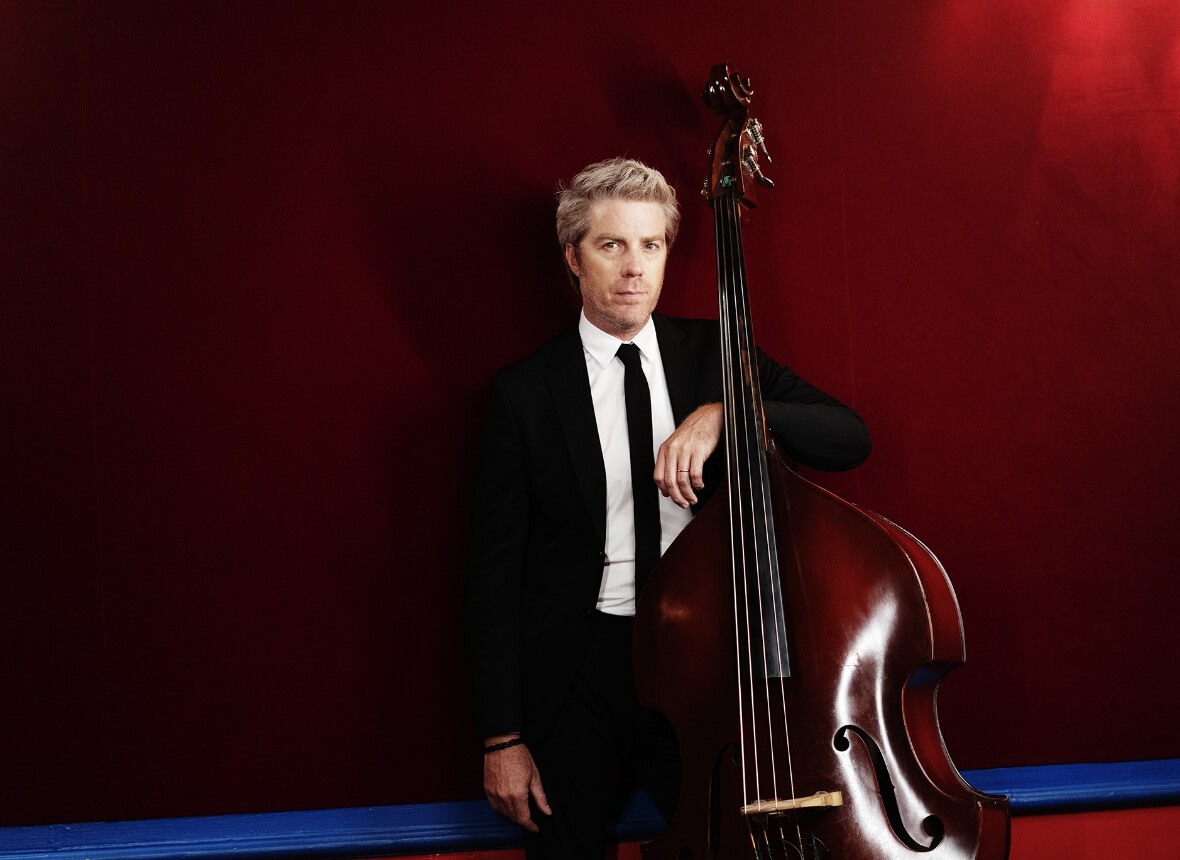Kyle Eastwood
Kyle is Clint’s son, but first and foremost a talented jazz bass player and composer of music for movies, among which Gran Torino, Mystic River, Million Dollar Baby, Letters from Iwo Jima and Invictus. He is the author of eight albums, the last of which, Cinematic, is a spin-off on cult movie themes. Kyle Eastwood’s quintet sublimates Gran Torino’s ballad, gets Pink Panther to swing and grooves with the Skyfall theme song.
After the release in 1998 of his very first record as a group leader, From There to Here, resolutely anchoring his references in the golden age of orchestral 1950’s jazz, Kyle Eastwood spent most of the years during the first decade after the new millenium constantly pushing back the frontiers of his musical universe. With a growing list of albums that are just as eclectic as they are refined, he stated with great elegance and know-how the extent of his musical tastes, flirting successively with cool and sophisticated electro-jazz, a resolutely groovy and smooth type of jazz, reminiscent of the sound of the seventies, all the way to arty, chic and urban, subtly cross-bred manifestos. Enriched by this scholarly exploration of the trends of contemporary globalized pop music,
Kyle Eastwood seems to have found his own path, a return to a more direct, lyrical and melodious type of jazz. The album Songs from the Château, recorded in 2011, inaugurates this new phase in his career, reflecting his quest for a relationship to tradition that is now both reasserted and renewed.
Heading a brand new quintet made up of talented young British musicians, perfectly attuned to his new musical choices, the bass player sets here the groundwork for a music that is both melodious and full of swing, both simple in its form and refined in its expression. The next three records, The View From Here, Timepieces and then In Transit, respectively released in 2013, 2015 and 2017 through the label Jazz Village, brilliantly confirmed the new esthetic orientation of Kyle and his band, reconnecting to the very essence of jazz by integrating some of its archetypal forms, but mostly, by basing for a great part his style on the pleasure of playing and group interactions. This period represents the climax of a huge introspective movement, both personal and aesthetic, into the very foundations of his musical vocation.

